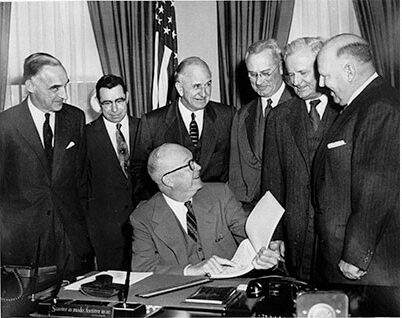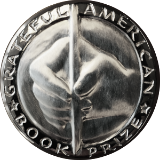July 1 — July 31, 2024
History Matters
Showing our children that their past is prelude to their future, with book recommendations
.
Dwight D. Eisenhower’s Interstate Highway System
On July 7, 1919, three hundred military personnel boarded seventy-nine trucks, motorcycles; an assortment of other vehicles, and set out from Washington, D.C., to participate in the First Transcontinental Motor Convoy. Their mission was to test America’s transportation infrastructure by traversing the 3,200 miles from the capital to San Francisco. Sixty-two days later– after churning through mud and dust clouds; navigating quicksand, collapsing roads, and bridges, the battered company reached its destination, traveling at an average speed of six miles per hour. A young Dwight D. Eisenhower–then a young lieutenant colonel– who was in attendance, never forgot the ordeal, or the War Department’s warning that America was “absolutely incapable of meeting the present-day traffic requirements.”
Thirty-five years later–on July 12, 1954–Vice President Richard Nixon addressed a Governor’s Conference in Lake George, N.Y., on behalf of President Eisenhower. The country was in a post-World War II boom; more people owned cars, but there were not enough roads to accommodate them. Reading from the president’s remarks, Nixon called for “a grand plan for a properly articulated system that solves the problems of speedy, safe, transcontinental traffic.”
On June 29, 1956, Eisenhower signed the National Interstate and Defense Highways Act into law. It linked, overhauled, and standardized 40,000 miles of highways/roads, and formed the framework for the Eisenhower Interstate System.
For more information, the Grateful American Book Prize recommends Charles U. Zug’s Dwight D. Eisenhower and the Federal Highway Act (2024).

Dwight D. Eisenhower signs H.R. 8127, to amend and supplement the Federal-Aid Road Act.
First Transcontinental Air Mail Service
Coast-to-coast road travel had proven to be difficult; often, it took months to get from point to point. Railways connected major cities and towns, but mail delivery to remote places was usually slow, dicey, and unpredictable. The Post Office had tried to institute a service in 1918, but there were still too many areas heavily dependent on weather, grass, or dirt airfields, mechanical issues, poor navigation equipment, and pilot competence.
Early experiments to bolster and broaden business had fallen through, and night flying was dangerous. In 1921, Congress was close to eliminating it. Finally, on February 22nd of that year, air mail was given a jump start when four biplanes lifted off carrying sacks of mail from San Francisco heading east, and to New York traveling west.
The pilots intended to operate in relays–day, and night–but severe weather shut two down two of the routes, and a third plane crashed. Commander Jack Knight, however, took to the skies after hours for airfields that were illuminated by bonfires–or not at all. Eventually, he was nicknamed the “hero who saved airmail,” and Congress re-instated its funding.
In the summer of 1924, with a regular series of beacons secured to facilitate nocturnal departures, regular transcontinental air mail service was linked—at last—across the continent.
For more information. the Grateful American Book Prize recommends Barry Rosenberg’s and Catherine Macaulay’s, Mavericks of the Sky: The First Daring Pilots of the U.S. Air Mail (2006).

Airmail Pilot Wesley L. Smith, 1922.
History Matters is a feature courtesy of the Grateful American Book Prize, an annual award for high quality, 7th to 9th grade-level books dealing with important moments in history.




